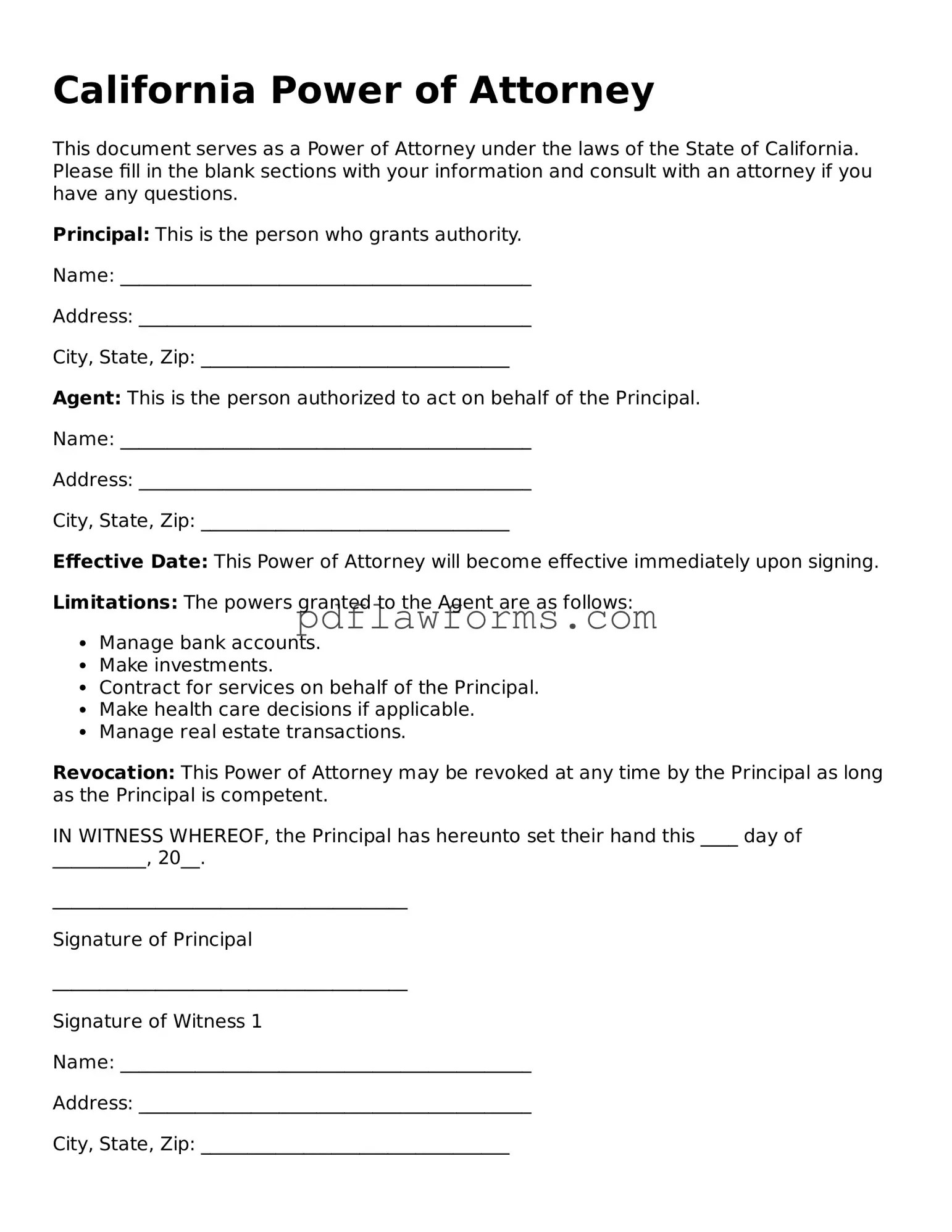Filling out a California Power of Attorney (POA) form can be a straightforward process, but many individuals make common mistakes that can lead to complications. Understanding these pitfalls can help ensure that the document is valid and effective when needed. Here are five frequent errors to avoid.
One significant mistake is failing to specify the powers granted. A Power of Attorney should clearly outline what authority is being given to the agent. Without specific powers, the agent may not have the legal ability to act on behalf of the principal in critical situations. This lack of clarity can lead to confusion and disputes, especially when urgent decisions need to be made.
Another common error involves not signing the form correctly. In California, the principal must sign the POA in the presence of a notary public or two witnesses, depending on the type of POA. If the signature is missing or does not meet these requirements, the document may be deemed invalid. Ensuring that all signatures are properly executed is crucial for the document's legality.
People also often overlook the importance of updating the Power of Attorney. Life circumstances change, and so do the needs of the principal. Failing to update the POA when significant life events occur, such as marriage, divorce, or the birth of a child, can result in outdated information. This oversight can create complications when the agent attempts to act on behalf of the principal.
Additionally, some individuals neglect to discuss the Power of Attorney with their chosen agent. It is essential for the principal to communicate their wishes and expectations clearly. Without this conversation, the agent may not fully understand their responsibilities or the principal's preferences, leading to potential conflicts or misunderstandings in the future.
Lastly, many people forget to keep copies of the completed Power of Attorney. It is important to distribute copies to the agent and any relevant institutions, such as banks or healthcare providers. Without access to the document, the agent may face difficulties when trying to exercise their authority, rendering the Power of Attorney ineffective when it is most needed.
